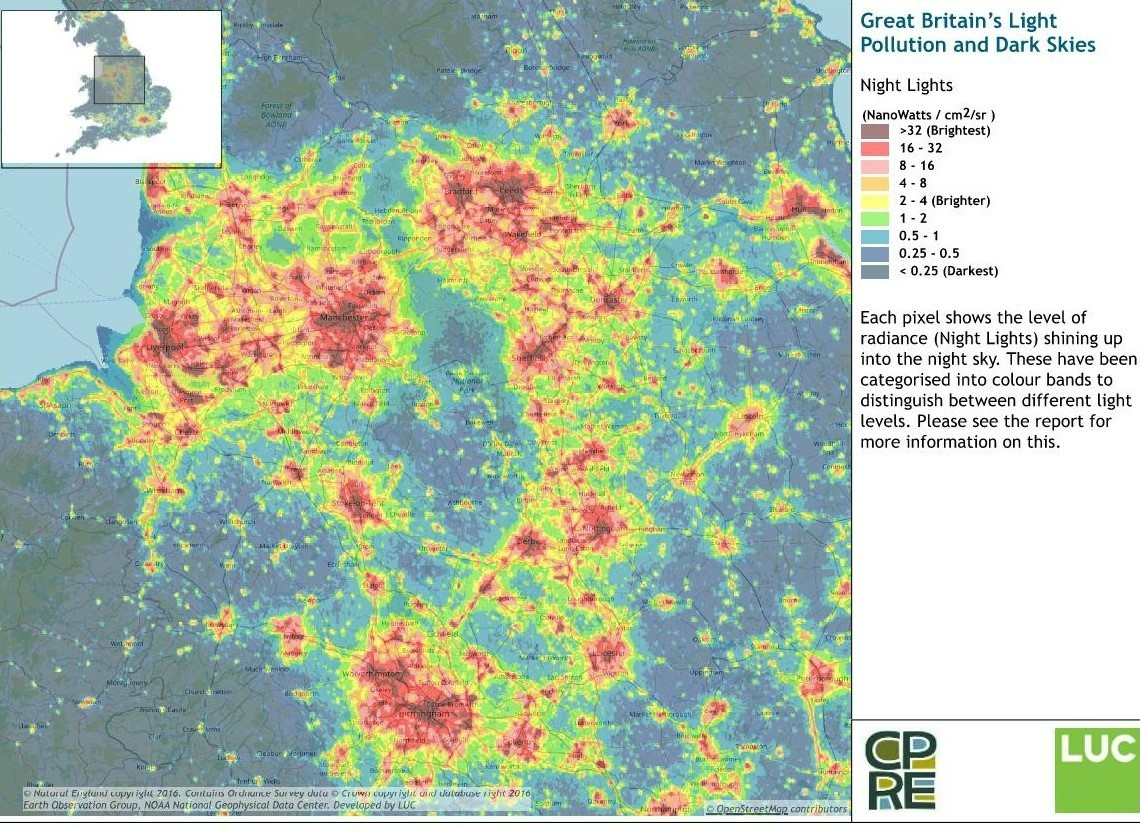Insights
Lords' light & noise report: top takeaways (part two)
Light pollution, the other 'neglected pollutant'
The Science and Technology Committee (Lords) recently published a report entitled ‘The neglected pollutants: the effects of artificial light and noise on human health’, calling for the creation of advisory groups to tackle these hazards which, it has been found, may increase risk of heart disease and premature death.
In the first part of this insight series, our Acoustics teams reviewed the findings and pulled out the main points to mull over. Now, Associate Environmental Lighting Designer Rory Marr shares his top takeaways in terms of light pollution.
We need a long-term strategy.
It’s great that the House of Lords is discussing light pollution – it helps highlight the challenges that need to be considered if we truly want to tackle the problem. The fact is, light pollution isn’t something new that just appeared overnight, so it would be foolish to think there’s a quick fix.
It’s important that we have a long-term lighting strategy that not only helps manage future developments but, more importantly, supports ways to address our current legacy of infrastructure. Having a planned pragmatic and consistent approach across the UK, with manageable targets and realistic aspirations, must be the way forward, surely.
Research should be concentrated in areas supporting agreed targets.
The report highlights the need for more research, so it would be great if efforts were concentrated specifically around areas that support agreed policies, objectives, and targets with regard to the impact of light pollution at night. Research should feed into standards and guidance, so that parameters and thresholds are aligned with government objectives, while also remaining relevant to modern-day activities and technological advancements. A study of external lighting and the impact of glare and flicker on road users (all users: from pedestrians through to HGV drivers) may be useful.
Perhaps the Government should support industry bodies (often charitable), so that the knowledge gained from research directly informs future legislation, standards, and guidance.
Clear, central guidance is needed, to avoid confusion.
There is good international, national, and regional light pollution guidance out there, that some local authorities are policing better than others. The guidance is quantifiable; however the Government’s approach is confusing and fails to clearly acknowledge these standards. Why?
While light pollution is referenced by DEFRA when browsing the Gov websites, you end up going round in circles! Ultimately the responsibility currently lies with overstretched local government, which comes under DLUHC – this means there is no coordination between government departments on a national or local scale.
Having no central UK monitoring makes it impossible to understand the baseline condition and assess future improvements and reward or penalise accordingly. This means there is currently no solid basis to support the government’s five core environmental policies:
- Integration principle
- Prevention principle
- Rectification at source principle
- Polluter pays principle
- Precautionary principle
Should the government invest in a central monitoring department under the DEFRA banner?
We need to make the best use of the data available.
There is no comprehensive light pollution data available in the public domain. We, like many other environmental lighting consultants, use the CPRE website, based on satellite imagery. While the data is slightly limited (due to its 400sq m pixelated format), this website is great as it provides an overview of the night sky radiance that can then be interpreted to better understand sky glow (one form of light pollution).
From CPRE’s website:

The image above shows the levels of radiance observed by satellite across the UK.
Now look at the image below, showing the Peak District National Park being encroached upon by the radiance from surrounding cities such as Wakefield, Sheffield, Manchester, and Birmingham.

Thought: how we can protect the boundaries of our existing national parks and national treasures? The CIE and ILP define environmental zones and set lighting limitations accordingly, so perhaps more thought can be given to help clearly define these zones and setting agreed ‘buffers’ to avoid further encroachment: a UK lighting masterplan might help.
In addition, if the Government invested in more accurate monitoring systems, it would be possible to quickly identify light pollutants from source and therefore take swift action to address our legacy issues. As with conservational ‘re-wilding’, we could look to implement lighting control measures on existing developed sites.
It could be worth offering incentives.
We live in the real world, so why don’t we look to improve on what we have and reward those making beneficial changes, penalising those who transgress (Environmental Principle 4)? We have the technology so let’s put it to good use.
Tax incentives and financial rewards could potentially be offered in both the private and commercial sectors, rewarding well-planned and considered lighting strategies that incorporate lighting control measures which can then be monitored to ensure lights are turned off when not required, or dimmed down to lower levels when applicable.
Guidance that may be helpful:
